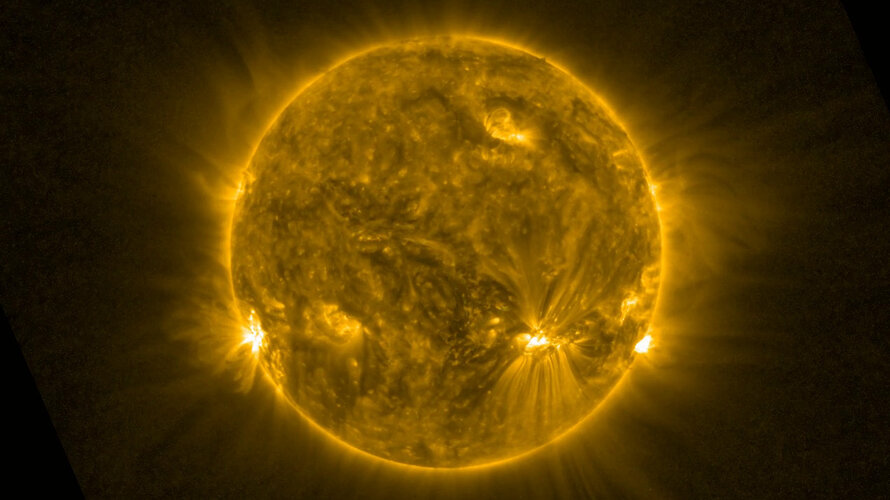Space News & Blog Articles
Solar snake spotted slithering across Sun’s surface
 Video:
00:00:11
Video:
00:00:11
Solar Orbiter has spotted a ‘tube’ of cooler atmospheric gases snaking its way through the Sun’s magnetic field. The observation provides an intriguing new addition to the zoo of features revealed by the ESA-led Solar Orbiter mission, especially since the snake was a precursor to a much larger eruption.
The snake was seen on 5 September 2022, as Solar Orbiter was approaching the Sun for a close pass that took place on 12 October. It is a tube of cool plasma suspended by magnetic fields in the hotter surrounding plasma of the Sun’s atmosphere.
Plasma is a state of matter in which a gas is so hot that its atoms begin to lose some of their outer particles, called electrons. This loss makes the gas electrically charged and therefore susceptible to magnetic fields. All gas in the Sun’s atmosphere is a plasma because the temperature here is more than a million degrees centigrade.
The plasma in the snake is following a particularly long filament of the Sun’s magnetic field that is reaching from one side of the Sun to another.
“You're getting plasma flowing from one side to the other but the magnetic field is really twisted. So you're getting this change in direction because we're looking down on a twisted structure,” says David Long, Mullard Space Science Laboratory (UCL), UK, who is heading up the investigation into the phenomenon.
The movie has been constructed as a time-lapse from images from the Extreme Ultraviolet Imager onboard Solar Orbiter. In reality, the snake took around three hours to complete its journey but at the distances involved in crossing the solar surface that means the plasma must have been travelling at around 170 kilometres per second.
What makes the snake so intriguing is that it began from a solar active region that later erupted, ejecting billions of tonnes of plasma into space. This raises the possibility that the snake was a sort of precursor to this event – and Solar Orbiter caught it all in numerous instruments.
For the spacecraft’s Energetic Particle Detector (EPD), the eruption was one of the most intense solar energetic particles events detected so far by the instrument.
“It's a really nice combination of datasets that we only get from Solar Orbiter,” says David.
More intriguing still is that the plasma from this eruption, known as a coronal mass ejection, happened to sweep over NASA’s Parker Solar Probe, allowing its instruments to measure the contents of the eruption.
Being able to see an eruption take place and then sample the ejected gasses, either with its own instruments or those of another spacecraft, is one of Solar Orbiter’s principal scientific aims. It will allow a better understanding to be developed of solar activity and the way it creates ‘space weather’, which can disrupt satellites and other technology on Earth.
Solar Orbiter is a space mission of international collaboration between ESA and NASA, operated by ESA. It launched on 10 February 2020, and earlier this month celebrated its 1000th day in space.
When you subscribe to the SpaceZE News Feed, we will send you an e-mail when there are new updates on the site so you wouldn't miss them.

